Published Sep 30, 2014
INTERVIEW: Emmy Winning VFX Artist Ronald B. Moore, Pt. 1
INTERVIEW: Emmy Winning VFX Artist Ronald B. Moore, Pt. 1
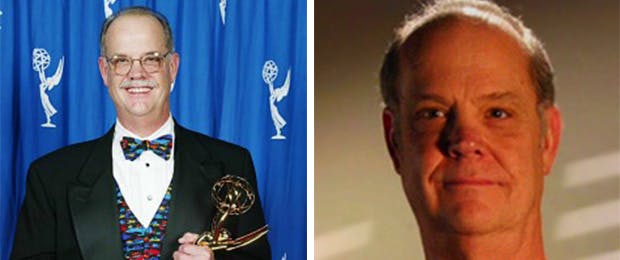
Ronald B. Moore can make a very rare claim – actually, a couple of them. Not only is he a five-time Emmy Award winner, but he’s one of the few people who belonged to the 18-Year Club, that small group that worked on Star Trek from the beginning of The Next Generation to the end of Enterprise. A visual effects wizard, Moore’s Trek work encompassed Star Trek V: The Final Frontier, Star Trek Generations, The Next Generation, a couple of Trek video games, Voyager and Enterprise; he was not involved in Deep Space Nine. StarTrek.com has wanted to interview Moore for a while now, and with his upcoming appearance at Destination Star Trek 3, which will run from October 3-5 in London, Moore agreed to look back at his days in the Trek galaxy and to fill us in on his current projects. Below is part one of our exclusive conversation, and visit StarTrek.com again to read part two.
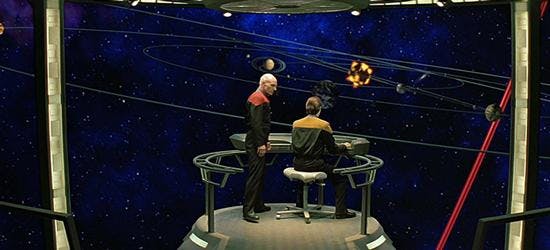
You’ll be in London for Destination Star Trek 3. What else are you working on these days?
MOORE: I have been keeping busy working as a visual effects producer. I worked a little on a film called Birdman with Michael Keaton. It should be out soon. I think it is going to do well. So far the reviews have been really good. I am doing some pre-production work on a film now that I really can’t say much about, but it is a remake of a really huge movie. We will have to see how that goes.
How much of a calling card is your Star Trek work?
MOORE:Star Trek was a very visible show, so it helps in some ways and hurts in others. Sometimes producers think of Trek and for some reason think that all we did was spaceships. Or they just don’t think much of the shows. I have talked to directors that think that directing Star Trek episodes hurt them sometimes as they weren’t taken seriously. Hard to imagine. I think this same thinking kept the show from winning Emmys for series and actors. For me, it has been good.
What were the calling cards/previous credits that landed you the gig on Star Trek?
MOORE: When Star Trek came along I had been working in visual effects for many years. Lots of TV shows and features. Working for Richard Edlund at Boss Films was a great experience. I worked there on features such as Ghostbusters, 2010, Big Trouble in Little China, Poltergeist 2 and many others. At Boss we used some of the same systems as ILM did. Richard and many of the staff came from ILM. When Star Trek started up, the plan was to have ILM complete a set of ship shots that would be used over and over during the run of the series. The plan was that we would not need any more shots. When ILM delivered the shots for the Next Generation main title there were many elements that needed to be composited. The rolls of film and yards of paperwork were complicated. When I went in for an interview they showed me the mess and, because I worked using the same systems, it all was clear to me. That is what sealed the deal for me and kept me working for the next 18 years.
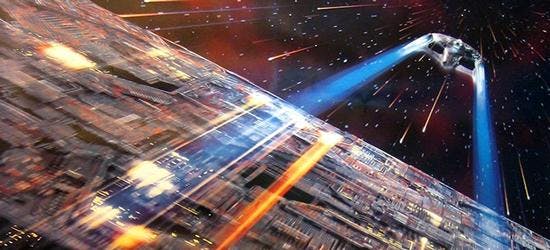
For those who don’t actually know, give us a sense of your assorted responsibilities on Star Trek.
MOORE: My first job was organizing the main title elements and helping Rob Legato composite them. Then I worked as a visual effects coordinator. It was my job to keep on top of every episode and all the shots there were in each and where all the pieces we needed to complete the show were located. It was a bit cumbersome at the beginning, but I created what became our prayer books where we kept all this information. It really helped, so we could spend our time creating shots rather than looking for stuff. Before long, I moved up to visual effects supervisor. Now, I had a coordinator and together we were responsible for all the effects work in every other episode. We had broken up into two teams, as it was nearly impossible for Rob Legato, Gary Hutzel and I to do all the shows. Dan Curry joined us and that made a big difference. As supervisor, I was responsible for breaking down a show and creating a list of the effects shots, and for discussing the shots with the director and producers and coming up with techniques and costs. When they were shooting visual effects shots on set we needed to be there to ensure we had all we needed. We had to create the exterior space shots at first using motion control and models, and later using computer generated imaging. Finally, we needed to complete all the shots and present them to the producers.
We’re going to name check some of your Trek credits. Take us through your memories of working on them… the challenges, anecdotes, high points. Star Trek V…
MOORE: Dan Curry and I worked a little on this movie. It was interesting because Bill Shatner was directing. We did some shots early in the production having to do with selling property on Nimbus Three. Our shots only showed up on a monitor in a bar on Nimbus Three. Other than that we were not involved. It was funny that we finished the shots we were doing and then started the season of TNG. When we finished the season, we went to a cast and crew screening of Star Trek V. While they did the movie, we completed an entire season of the TV show. Probably for about the same money.
The Next Generation
MOORE: When I started working on Next Gen, after seeing some footage, I didn’t think it was going to work. Shows what I know. The first episodes seemed to be reworking The Original Series shows. But they got it together and it became one of the best of the Star Trek shows. It was really cool to be able to work with Gene Roddenberry. He was a very special person and I am honored to have known him. This was a very special time for us. The show was very popular and people wanted to work on it and companies wanted us to use their equipment when we were compositing. It was amazing. We were doing the effects electronically and Star Trek was one of the first shows to do that. We were really at the forefront. I look at the shots from the show today and am amazed at what we got away with, but it was a different time and we were really pushing the envelope at the time. My favorite episode was “Identity Crisis.” Here the blind officer goes after the invisible enemy. How cool is that? The effects were complex, but that just makes it more fun for me.
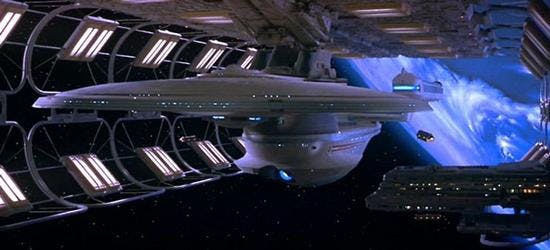
Generations
MOORE: Working on Generations was a great experience. We had a really great team of people working on the film. I was visual effects supervisor and did most of the set work and all the non-space shots in the film. John Knoll was the ILM visual effects supervisor and they did almost all the space shots. It was great working with him on the project. I enjoyed the stellar cartography sequence the most. It was fun to design the lighting for the blue screen and backlighted graphics and also to design the graphics that came into play as Data and Picard begin to see what the bad guy was trying to do. It was fun being on Generations from start to finish. The down side was that it meant leaving the TV show before the final episode and that if I decided to do Generations I would probably not be able to return to Voyager when I was finished. The new show would have been staffed up and underway before I was free. Still, I decided to do the movie. Luck was with me and when I was finished I was able to go to work on Voyager.
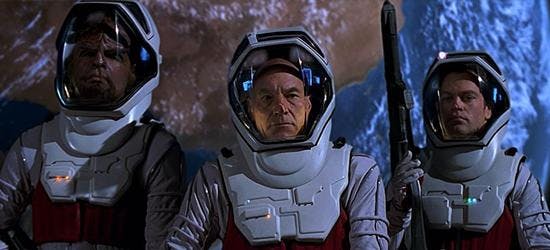
First Contact
MOORE: I did very little work on First Contact. I started out doing some breakdowns and budgeting, but when the show got underway I decided to stay with the television shows and the visual effects work was taken over by David Takemura, who had been working with us from the start and is very talented. I think he did a great job.
The Trek video games
MOORE: There were two games I was a part of. Again, I believe it was in partnership with Dan Curry. One was a Klingon game and the other a Borg game. It was very interesting, as the techniques are quite different and, of course, a much lower budget. I think it was wise to use us, as we had experience and the knowhow to work fast and efficiently. When all the work was complete, I was given a CD with the game on it. But for some reason I was never able to get the games to play on my computer! I think I still have them around somewhere, but I am sure they will still not work on today’s computers. It was fun, and working with Dan is always a highlight. He is one of the most creative people I have ever worked with and has a dark humor that is something else.
Visit StarTrek.com again tomorrow to read part two of our conversation with Ronald B. Moore. And visit www.destinationstartrek for details about the upcoming Destination Star Trek 3 event.
